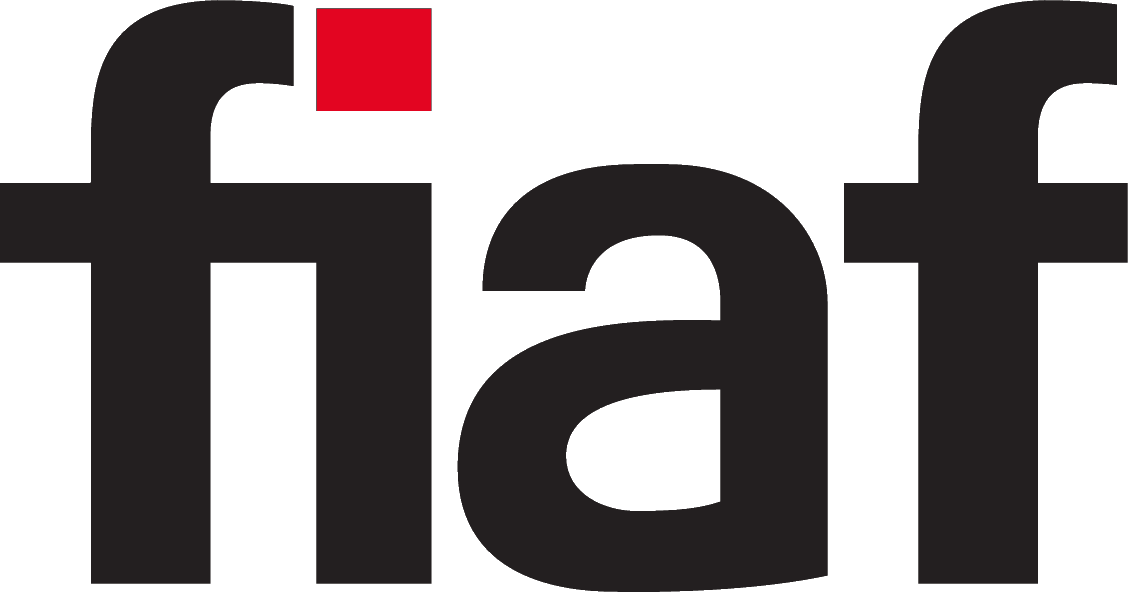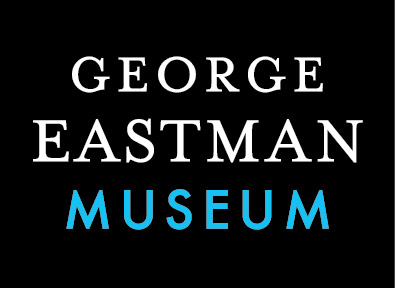Cinépanoramic(1953–1956)
A French widescreen process for anamorphic filming and projection, with a 2.55:1 or 2.35:1 aspect ratio, and prints with 4-channel magnetic sound. Distributed in France by Jean-Placide Mauclaire's Distribution internationale cinématographique (D.I.C.), but also adopted in several other countries.
Film Explorer
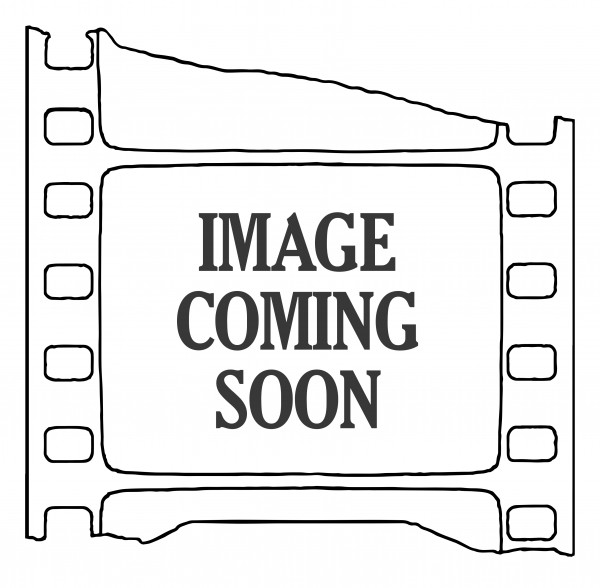
Identification
Unknown
2.50:1 (June–August 1953); 2.55:1 (December 1953–1956, 4-track magnetic stripe); 2.35:1 (probably as early as summer 1954, mono optical track).
B/W; various monopack color processes: Gevacolor, Eastman Color, Ferraniacolor, Trucolor.
Different manufacturer edge markings, sometimes partially obscured by the magnetic stripes.
1
Color fading may be evident on original Eastman Color and Gevacolor prints.
filmé en Cinépanoramic; en Cinépanoramic; Objectifs Cinépanoramic.
Cinépanoramic prints were planned to contain one of three different soundtrack configurations before 1956: (1) four magnetic stripes, each 1.3mm-wide (prototype?); (2) three magnetic stripes, each 1.3mm-wide and one half-width optical track (prototype?); (3) one mono optical soundtrack.
3-channels (left–center–right, magnetic); 4-channel (left–center–right plus 1 control channel, magnetic); mono (optical).
Approximately 22.05mm x 17.65mm (0.868 in x 0.695 in).
B/W; various monopack color processes: Gevacolor, Eastman Color, Ferraniacolor, Trucolor.
Different manufacturer edge markings.
History
Cinépanoramic was a trade name for an anamorphic widescreen process that aimed to compete with 20th Century-Fox's CinemaScope, which was introduced in France at a private demonstration in Paris in June 1953. Cinépanoramic was a French initiative that combined anamorphic lenses, stereophonic sound and an extra-wide screen. It was the brainchild of Jean-Placide Mauclaire, a cinephile businessman, film distributor, founder of the industry magazine Le Film français (1944) and of the Elysées-Matignon restaurant (1955), a hotspot of Parisian show business. He surrounded himself with a team of skilled professionals (including cinematographer Christian Matras, who carried out the first tests) to quickly launch the process– by employing a 2.50:1 and 2.35:1 alternate aspect ratio, as well as a standard positive print (thus avoiding the “Fox-hole perfs” of the 2.55:1 CinemaScope process) – Cinépanoramic looked to distinguish itself from competitors, most likely to avoid accusations of technical plagiarism.
Technically speaking, though, Cinépanoramic was a close copy of the first form of CinemaScope (2.55:1 aspect ratio with 4 magnetic tracks). The first professional demos of the Cinépanoramic process took place in Paris in January 1954, with a screening of two short documentaries, one of them directed by Léon Joannon. The first feature film to be made using the process, L'Or des pharaons (directed by Marc de Gastyne and shot by Henri Decaë), began photography in Egypt in March 1954, but never received proper distribution (for more detail see the Selected Filmography). After over a year of delays, the first French feature film actually shot and widely released in Cinépanoramic was Walter Kapps' Mademoiselle de Paris (August 1955). Adoption of the Cinépanoramic process remained limited in France, with only seven feature films shot between 1954 and 1956, many of which were not released in stereophonic prints, nor in the intended 2.55:1 aspect ratio.
When it came to supplying theaters with their anamorphic lenses, Cinépanoramic equipped a few prestige theaters as well as some private screening rooms, although this paled in comparison to the number of CinemaScope lenses distributed by Professor Henri Chrétien’s Société technique d’optique et de photographie (STOP), which supplied the majority of French theaters during 1953 and 1954.
Following these early efforts, Cinépanoramic shifted focus towards the documentary film market and the export of its technology abroad. Starting in the summer of 1954, an agreement was signed with Reportfilm, an equipment rental company based in Rome, for the use of Cinépanoramic on Italian productions, specifically under other trademarks registered by the company (CineScope, CinepanoramicScope, Supercinescope, Superfilmscope, Cinepanscope). Cinépanoramic lenses were also distributed in Germany (Bavaria Filmkunst); Spain (Producciones Benito Perojo); the UK (Pathe Equipment Ltd), where the process was renamed CameraScope in November 1956; and the Soviet Union (Stankoimport). However, the contract signed with Hollywood's Republic Pictures in September 1955 was by far D.I.C.’s most successful export. The American studio, wishing to circumvent Fox’s CinemaScope monopoly, acquired anamorphic Cinépanoramic attachments, and adapted them to its Mitchell cameras for the production of some fifteen feature films (shot in the reduced 2.35:1 aspect ratio, with mono optical soundtracks, and rebranded as Naturama), including The Maverick Queen (1955) and Lisbon (1956).
In France, in addition to the production of some issues of newsreels (Les Actualités françaises, Eclair-journal and Pathé-journal) and a few advertising films in the anamorphic format, a dozen short and medium-length documentaries were produced in Cinépanoramic between 1954 and 1956, including Michel Rocca's Le Trésor de la mer rouge, which was presented at the 1955 Cannes Film Festival, France.
Ultimately, the French Cinépanoramic process was unable to establish a strong foothold. In spite of support from the CNC (Centre national du cinéma, the agency of the French Ministry of Culture which partly subsidizes the French film industry) and “free” advertising in Le Film français, the Cinépanoramic company had to make do with low-cost domestic feature-film productions, for which it found itself in direct and fierce competition with a rival French process, DyaliScope, from 1956 onwards.
By 1956, the 2.55:1 aspect ratio and accompanying 4-channel stereophonic sound had been abandoned by French filmmakers. With the subsequent standardization of the new 2.35:1 anamorphic aspect ratio, Cinépanoramic-D.I.C. changed its name to the more clearly national Franscope. It soon supplanted its rival CinemaScope in France from 1957, before overtaking DyaliScope in popularity after 1962.
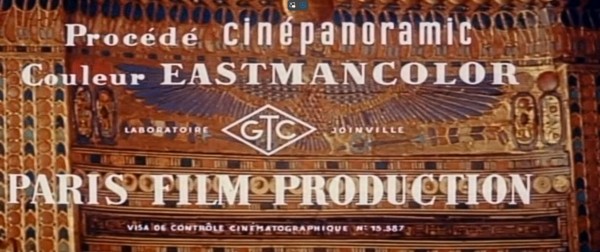
Cinépanoramic credit from the main titles of the feature film L’Or des pharaons, aka L’Or du du Nil (1954). Note that this transfer of the film is severely cropped on its left edge due to adapting the original 2.55:1 photography to the narrower 2.35:1 frame.
Dailymotion
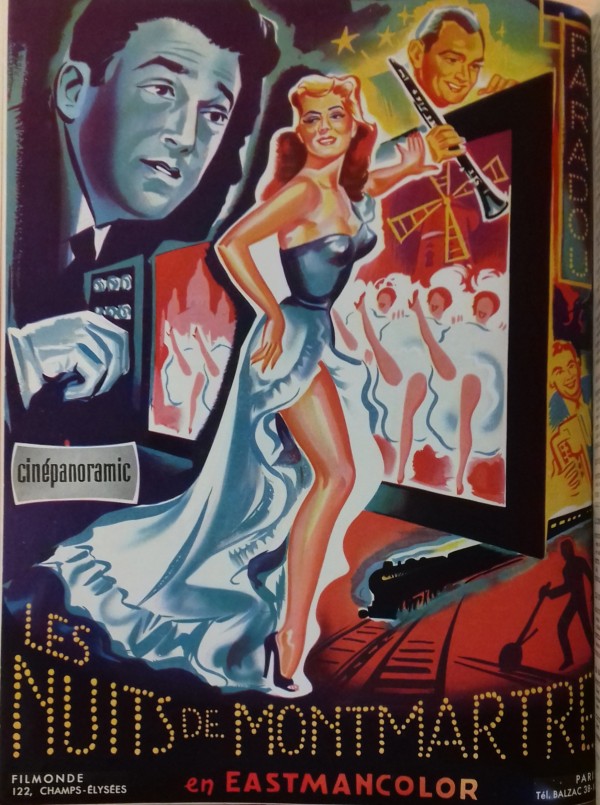
A full-page advertisement for the French crime film Les nuits de Montmartre (1955). The Cinépanoramic logo is prominently displayed.
Le Film français, 589, 1955.
Selected Filmography
Shooting took place from October 3 to December 16, 1955, in B/W Cinépanoramic (presumably with a 2.35:1 aspect ratio). A contemporary road drama, the film was presented at Cannes in 1956 and won the 1956 CIDALC (Comité international pour la diffusion des arts et des lettres par le cinéma) medal. Released in France on June 20, 1956, it generated sales of 1,282,547 tickets. It was the last French film to feature the Cinépanoramic trademark, at least in the credits.
Shooting took place from October 3 to December 16, 1955, in B/W Cinépanoramic (presumably with a 2.35:1 aspect ratio). A contemporary road drama, the film was presented at Cannes in 1956 and won the 1956 CIDALC (Comité international pour la diffusion des arts et des lettres par le cinéma) medal. Released in France on June 20, 1956, it generated sales of 1,282,547 tickets. It was the last French film to feature the Cinépanoramic trademark, at least in the credits.
An Italian musical comedy chronicling the restless sentimental affairs of Jupiter, after he descends to Earth to celebrate his 3,000th birthday. The first film shot with Cinépanoramic lenses (but released under the trademark “CineScope”) in 2.55:1 format, in Ferraniacolor and with Perspecta stereophonic sound. It is considered to be the first Italian anamorphic scope film.
An Italian musical comedy chronicling the restless sentimental affairs of Jupiter, after he descends to Earth to celebrate his 3,000th birthday. The first film shot with Cinépanoramic lenses (but released under the trademark “CineScope”) in 2.55:1 format, in Ferraniacolor and with Perspecta stereophonic sound. It is considered to be the first Italian anamorphic scope film.
A contemporary sentimental comedy, set in Parisian fashion circles. Shooting began on February 22, 1955, and wrapped on April 8. The first French film in Cinépanoramic 2.55:1, Eastmancolor and magnetic stereophonic sound to be released in France (August 3, 1955). It generated domestic sales of 2,130,250 tickets.
A contemporary sentimental comedy, set in Parisian fashion circles. Shooting began on February 22, 1955, and wrapped on April 8. The first French film in Cinépanoramic 2.55:1, Eastmancolor and magnetic stereophonic sound to be released in France (August 3, 1955). It generated domestic sales of 2,130,250 tickets.
The first film distributed by American studio Republic Pictures to be shot in Naturama (Cinépanoramic anamorphic lenses mounted on Mitchell cameras; 2.35:1) and Trucolor. Released on April 4, 1956, in the United States; and on September 25, 1956, in France.
The first film distributed by American studio Republic Pictures to be shot in Naturama (Cinépanoramic anamorphic lenses mounted on Mitchell cameras; 2.35:1) and Trucolor. Released on April 4, 1956, in the United States; and on September 25, 1956, in France.
An adaptation of Francis Carco's novel Jésus-la-Caille (1914), set in the Parisian underworld. Advertised in B/W DyaliScope under the title Jésus la Caille, the film was actually shot between April 18 and May 27, 1955, in Cinépanoramic (2.55:1?). It had its world premiere at the Deauville Film Festival on August 20, 1955, and was released in France on September 9, 1955, with a ban on under-16s. It was the first French film in B/W scope. It sold 1,256,717 tickets in France.
An adaptation of Francis Carco's novel Jésus-la-Caille (1914), set in the Parisian underworld. Advertised in B/W DyaliScope under the title Jésus la Caille, the film was actually shot between April 18 and May 27, 1955, in Cinépanoramic (2.55:1?). It had its world premiere at the Deauville Film Festival on August 20, 1955, and was released in France on September 9, 1955, with a ban on under-16s. It was the first French film in B/W scope. It sold 1,256,717 tickets in France.
Shot by Henri Decaë in Cinépanoramic and Eastmancolor. The first French feature shot in 2.55:1 anamorphic scope, although it was never commercially released in France for obscure legal reasons. Filmed from March 1954 in Egypt starring Danielle Dumont and Gil Vidal (an extra in the film who later became well known as the singer and actress Dalida), it was screened at the 1954 Venice Film Festival as a fictional docudrama set in contemporary times and presented in a hybrid format: fictional sequences shot in widescreen format combined with documentary sequences in Academy format, likely filmed previously (notably de Gastyne's short documentary film Egypte éternelle, shot by Decaë in 1953). Other versions of the film (with a different title and probably different cuts and footage) were shown in November 1954 at the Paris Opera, and again in September 1955 at the Locarno Festival. The film was finally released in some theaters in France (outside Paris) on May 18, 1956, under a different title: L’Or du Nil, credited on the poster as a CINEPANORAMIC-SCOPE release.
Shot by Henri Decaë in Cinépanoramic and Eastmancolor. The first French feature shot in 2.55:1 anamorphic scope, although it was never commercially released in France for obscure legal reasons. Filmed from March 1954 in Egypt starring Danielle Dumont and Gil Vidal (an extra in the film who later became well known as the singer and actress Dalida), it was screened at the 1954 Venice Film Festival as a fictional docudrama set in contemporary times and presented in a hybrid format: fictional sequences shot in widescreen format combined with documentary sequences in Academy format, likely filmed previously (notably de Gastyne's short documentary film Egypte éternelle, shot by Decaë in 1953). Other versions of the film (with a different title and probably different cuts and footage) were shown in November 1954 at the Paris Opera, and again in September 1955 at the Locarno Festival. The film was finally released in some theaters in France (outside Paris) on May 18, 1956, under a different title: L’Or du Nil, credited on the poster as a CINEPANORAMIC-SCOPE release.
Technology
Cinépanoramic was the commercial name for a widescreen cinema process that, similar to its competitor CinemaScope, combined anamorphic lenses, stereophonic sound on magnetic tracks and a reflective wide screen.
The anamorphic shooting lens, known commercially as Anamorphot, consisted of six cylindrical lenses that horizontally compressed the image by a factor of two. Barite and lead glass was used. In its first configuration, from July 1953, the anamorphic lens was an additional and separate lens, requiring the camera operator to focus twice: once with the anamorphic lens attachment, and once with the primary lens. From November 1954, an anamorphic lens coupled with a gearwheel and sprocket system (similar to the Bausch & Lomb lenses used for CinemaScope) was designed, allowing focus to be achieved with a single adjustment.
The anamorphic projection lens presented fewer design problems, as the projection distance was fixed. Featuring six cylindrical lens elements and a fixed anamorphic ratio of two, it was typically positioned in front of the projector lens.
The Cinépanoramic process planned to use stereophonic sound on a 35mm print with either three or four magnetic tracks, designed by the Pyral company. Unlike the solution offered by CinemaScope, the normal Kodak Standard perforations on the print did not have to be modified, as the track widths were reduced to 1.3mm (0.051 in) (compared with 1.6mm [0.063 in] for CinemaScope). Similarly, the fourth track was not intended for further ambient sound effects in the room, but as a control track. In another proposed configuration, three magnetic tracks were supplemented with a half-width optical track for regular monophonic sound reproduction, thus corresponding to a magoptical print. These copies seem to have been prototypes only, as the reduced width of the magnetic and optical tracks undoubtedly resulted in poor sound reproduction.
The third element of the package was an increased-reflectivity metallized screen, called Panlight, manufactured by Cinépanoramic-D.I.C. from July 1953. It consisted of multiple layers of aluminized plastic plates. It was tested in 1953, but was ultimately installed in only a few theaters.
It is unlikely that the complete Cinépanoramic “package” of 2.55:1 aspect ratio, stereophonic sound and metallized screen, was deployed in theatres as originally intended. Facing fierce competition from CinemaScope, after only a few months in the market, Cinépanoramic opted for compatibility with CinemaScope installations (by revising its initial projection ratio from 2.50:1 to 2.55:1), then tried to meet the needs of a broader range of professionals by authorizing its use with B/W films and allowing for a print with a single mono optical track. Probably as early as the summer of 1954, Cinépanoramic introduced a reduced projection ratio, first of 2.30:1, and then of 2.35:1, greatly increasing the format’s compatibility. This “reduced” version of the process kept production and exhibition costs down.
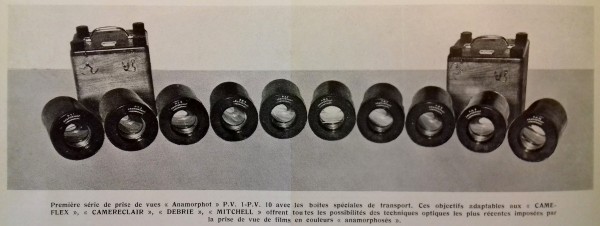
The first series of anamorphic lens attachments for cameras (with their carrying case) labelled “P.V.1” to “P.V.10”.
Le Film français, 491 (Dec. 4), 1953, p. 8.
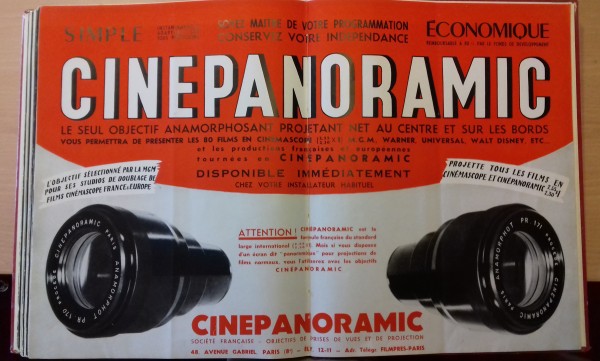
A Cinépanoramic advertisement for the anamorphic lens attachments for projection.
Le Film français, 518 (May 28), 1954, pp. 20–21.
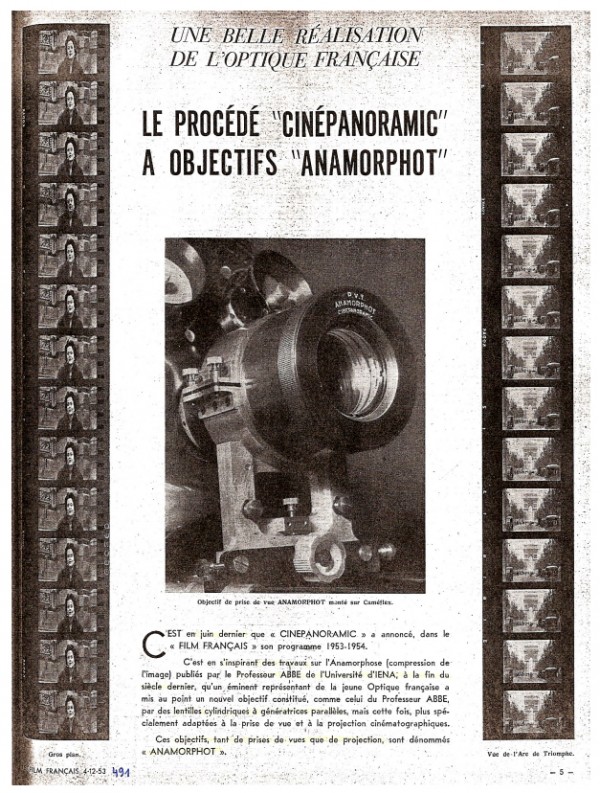
An advertisement for the Cinépanoramic Anamorphot lens attachment for camera, also showing two series of photograms enlarged from 35mm negatives.
Le Film français, 491 (Dec. 4), 1953, p. 5.
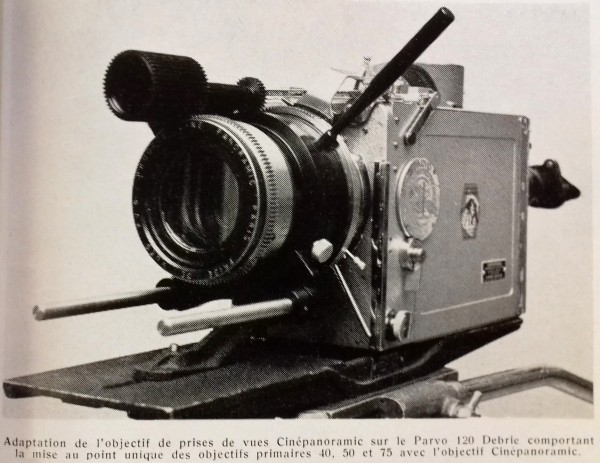
The Cinépanoramic anamorphic attachment could be coupled with either a 40mm, 50mm or 75mm prime lens mounted on a 35mm Parvo 120 Debrie camera, with a unique focus control mechanism.
Cinépanoramic advertisement, Le Film français, 540–541 (Autumn [Nov.]) 1954, pp. 51–4.
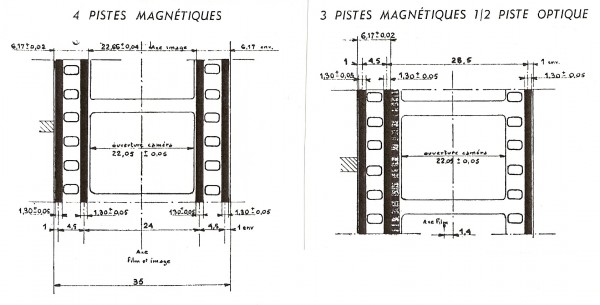
Pyral schematic diagrams for the 4-track magnetic stripe and 3-track magnetic stripe/half-width optical track arrangements intended for Cinépanoramic prints. It is unclear if these were ever implemented on release prints.
Le Film français, 470 (Jul. 10), 1953, p. 5.
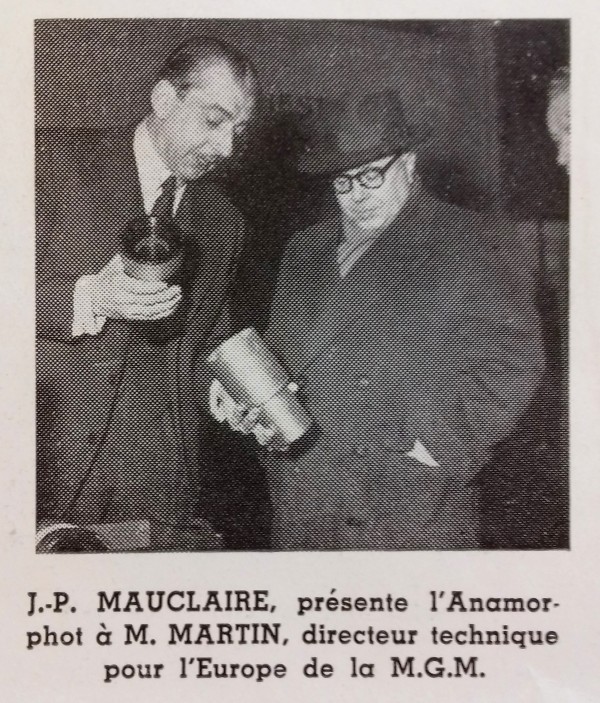
J.-P. Mauclaire showing the Cinépanoramic anamorphic projection lens to M. Martin, MGM technical manager for Europe during the February 22, 1954 corporate demonstration of the Cinépanoramic process at Pathé-Marignan theater, Champs-Elysées, Paris.
Le Film français, 500–501 (Winter [February]), 1954, pp.109–12.
References
American Cinematographer (1956). ”Naturama – Republic's New Wide-Screen Process”. American Cinematographer, 37:11 (Nov.): pp. 668, 690–2.
Anon. (1954). “Cinepanoramic”. In Silvio D'Amico (ed.), Enciclopedia dello spettacolo, vol. III, Casa editrice Sadea, reprinted 1975. Rome: UNEDI, p. 854.
Anon. (1956).“Publicité de Cinépanoramic: changement du nom de marque Cinépanoramic qui devient Franscope”. Le Film français / Cinémonde, Bulletin d’informations du Festival du film de Cannes, 10 (May 2).
Cinémathèque française (2014). “Objectif anamorphoseur de projection Cinépanoramic n° PR 562, n° d’inventaire AP-14-2948(1/2)”. Cinematographic Devices Catalog of the Cinémathèque française and the CNC. https://www.cinematheque.fr/fr/catalogues/appareils/collection/objectif-anamorphoseur-de-projectionap-14-2948-1-2.html
Desternes, Jean (1954). “Venise 1954 “. Cahiers du cinéma, 40 (Nov.): p. 11.
Film français (1953a). “Le procédé CINEPANORAMIC à objectifs Anamorphot”. Le Film français, 470 (10 Jul.): pp. 4–5.
Film français (1953b). “Le Procédé Cinépanoramic à objectifs Anamorphot “. Le Film français, 491 (4 Dec.): pp. 5–8.
Film français (1954a). “Publicité pour l’objectif de projection Cinépanoramic”. Le Film français, 500–501 (Feb.): p. 112.
Film français (1954b). “Premier grand film en Cinépanoramic L’Or des pharaons”, Le Film français, 528–529 (Autumn): p. 11.
Film français (1955). “La grande société américaine Republic Pictures a adopté le procédé français Cinépanoramic”. Le Film français, 597–598 (Autumn): p. 71.
Rousseau, Olivier (2007). “Les Formats larges dans le cinéma français de fiction (1953–2000): histoire des techniques, production, exploitation, esthétique”, Doctoral thesis, under the supervision of Jean A. Gili, Université Paris 1 Panthéon-Sorbonne. https://theses.hal.science/tel-04184041
Rousseau, Olivier (2014). “Histoire technique des formats larges en France (1953-1969) : stratégies nationales face à l'innovation américaine du CinémaScope”. Available at https://www.academia.edu/9721471/_Histoire_technique_des_formats_larges_en_France_1953_1969_strat%C3%A9gies_nationales_face_%C3%A0_linnovation_am%C3%A9ricaine_du_Cin%C3%A9maScope_
Rousseau, Olivier (2017). “CinemaScope, DyaliScope, Franscope: l'aventure du scope français dans les années 1950 et 1960”. Conference paper, La Cinémathèque française, Le conservatoire des techniques cinématographiques (November 17, 2017). https://www.cinematheque.fr/video/1146.html
Patents
La société Distribution internationale cinématographique, S.A. Cinépanoramic. French Patent 429,137, filed June 19, 1954.
La société Distribution internationale cinématographique, S.A. Anamorphot. French Patent 429,487, filed June 27, 1954.
Compare
Related entries
Author
Olivier Rousseau holds a PhD from the Université Paris 1 Panthéon-Sorbonne, and wrote a thesis entitled Les Formats larges dans le cinéma français de fiction (1953-2000) : histoire des techniques, production, exploitation, esthétique, under the supervision of Jean A. Gili, defended in 2007. Senior teacher of modern literature, he has taught literature, expression-communication and cinema for over 20 years. He is currently editor-lexicographer at the Dictionary Department of the Académie française in Paris. He has published several articles on the history and aesthetics of wide formats in France (including “Le Format large en France (1953-2000): de la modernité à la cinématographicité de l’image”, Cahiers du CIRCAV, 2010; “Les procédés anamorphiques concurrents du CinémaScope (1953-1971), Le CinémaScope entre art et industrie, 2002) or on the peplum (“In CinemaScope. Péplum américain et format large : le spectacle total”, Positif, 2000). He has also taken part in several conferences (including ‘Le format large en France (1953-2009): statut singulier d’une innovation pérenne’, Impact Conference, Cinémathèque québécoise,Montréal, 2011; “Statistiques des genres des films larges en France (1953-2000). Spécificité française et interaction entre genre et valeurs de production”, Colloque IRCAV/Studies in French Cinema, Paris, 2010). He was also a lecturer at the Cinémathèque française as part of the Conservatoire des techniques cinématographiques in 2008 (“Technique et esthétique du CinemaScope”), and again in 2017 (“CinemaScope, DyaliScope, Franscope: l’aventure du scope français dans les années 1950 et 1960.” ). He is a member of the C.S.T. (Commission supérieure technique de l’image et du son). (https://independent.academia.edu/OlivierRousseau)
Rousseau, Olivier (2025). “Cinépanoramic”. In James Layton (ed.), Film Atlas. www.filmatlas.com. Brussels: International Federation of Film Archives / Rochester, NY: George Eastman Museum.
